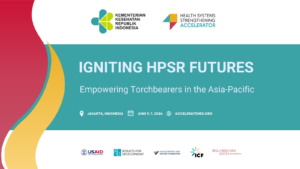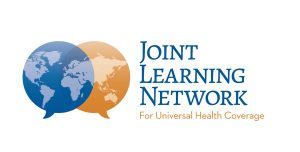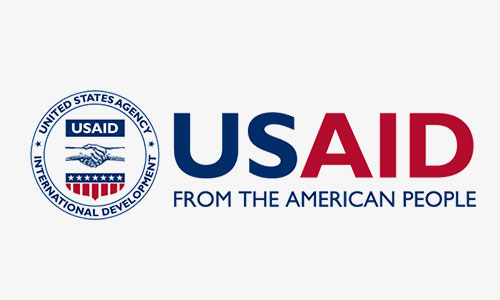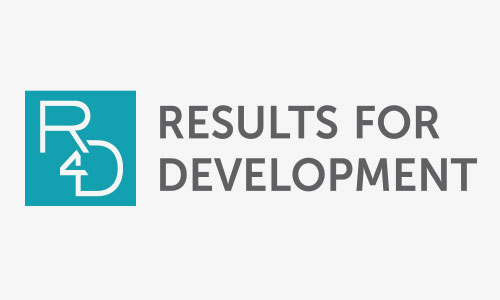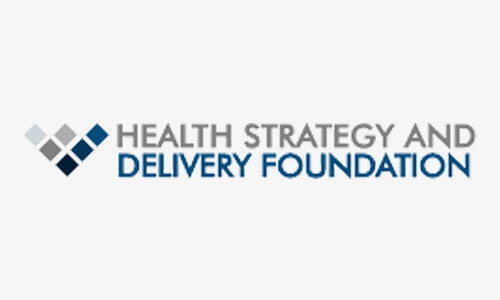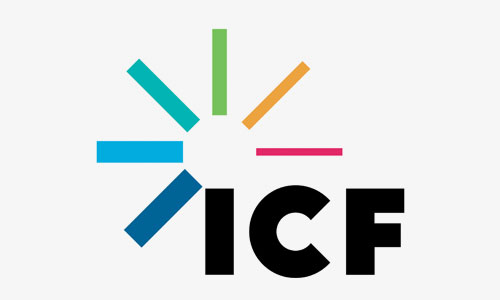National Coordination of Multi-sectoral, Multi-level Pandemic Responses Virtual Collaborative
The Health Systems Strengthening Accelerator (Accelerator), implemented by Results for Development, in partnership with the Joint Learning Network for Universal Health Coverage, established a network of in‐country leaders to support a cross‐country learning collaborative on multi‐sectoral and multi‐level coordination of pandemic responses such as the current COVID‐19 crisis and building toward more resilient and responsive systems in the future.
Objectives
The current COVID‐19 pandemic is devastating for health systems, economies, human and socioeconomic conditions globally. To slow the spread of the virus and to reduce its toll on population health and socioeconomic development, country leaders must manage strong systems‐focused, multi‐sectoral coordination, planning, and monitoring. Countries are asking how to build and manage the cross‐sectoral teams needed to mount a coordinated response to the pandemic.
Multisectoral teams from eight countries — Bahrain, Bangladesh, Ethiopia, Indonesia, Kenya, Mongolia, Nigeria, and Senegal formed a learning collaborative focused on multi‐sectoral, multi‐level coordination of pandemic responses allows for cross‐country exchange on what has worked and not worked and the generation of practical guidance that can benefit others as a global public good.
Our Work
Collaborative participants convened for the first virtual meeting in December 2020 to co‐develop a learning agenda and begin exchanging on two topics they prioritized: (1) Citizen fatigue and non‐compliance and (2) Information availability and the integration of data systems. The second meeting of the collaborative, held in February 2021, provided an opportunity to exchange and capture country experiences on engaging communities and households in the response to the COVID‐19 pandemic. Participants also identified promising approaches and key areas for future peer support and problem‐solving on the theme of community engagement. In this first phase, the collaborative will support each country team to conduct a self‐assessment exercise to identify concrete opportunities to improve their coordination efforts.
Blogs
Shaping the Future of Health Policy and Systems Research in the Asia Pacific
Building on recent efforts, this event focuses on co-creation, dialogue,...
Read MoreGlobal Health Leaders to Convene in Nairobi for Primary Health Care Financing Workshop
This workshop builds on the Foundational Reforms for Financing and...
Read MoreHealth Systems Strengthening Accelerator at CUGH2024
Join us on March 9th to explore how co-creation has...
Read MorePoints à retenir du dialogue virtuel de l’Accélérateur entre le Togo et la Guinée sur la santé communautaire et l’intégration de la vaccination
Auteurs: Isabeaux Kennedy Mitton, Lior Miller, Leah Ewald, Maria Francisco,...
Read MoreHighlights from the Health Policy and Systems Research March Ideas Marketplace
Author: Christina Shaw, Knowledge Management & Communications Officer, Results for...
Read MoreCountries Need Continued Joint Learning and Problem-solving to Curb the COVID-19 Pandemic
The Collaborative wrapped up the first phase on April 27...
Read MoreRESOURCES
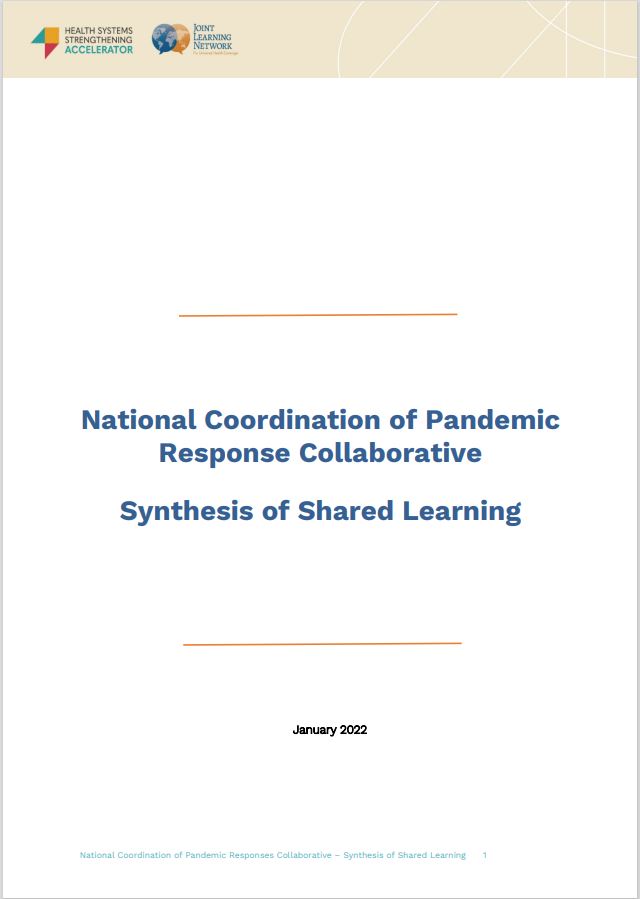
National Coordination of Pandemic Response Collaborative: Synthesis of Shared Learning
This brief synthesizes relevant evidence, participant country experiences, and lessons learned on national responses to the COVID-19 pandemic to highlight efficient and effective approaches that may be applied for health systems resiliency and improved pandemic preparedness.
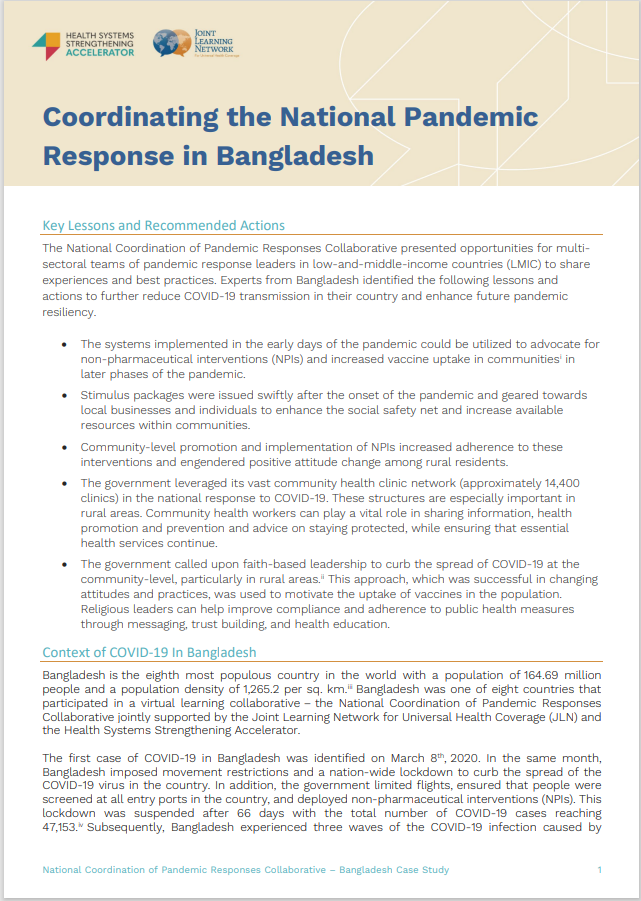
Coordinating the National Pandemic Response in Bangladesh
This brief summarizes lessons and actions to reduce COVID-19 transmission in Bangladesh and enhance future pandemic resiliency.
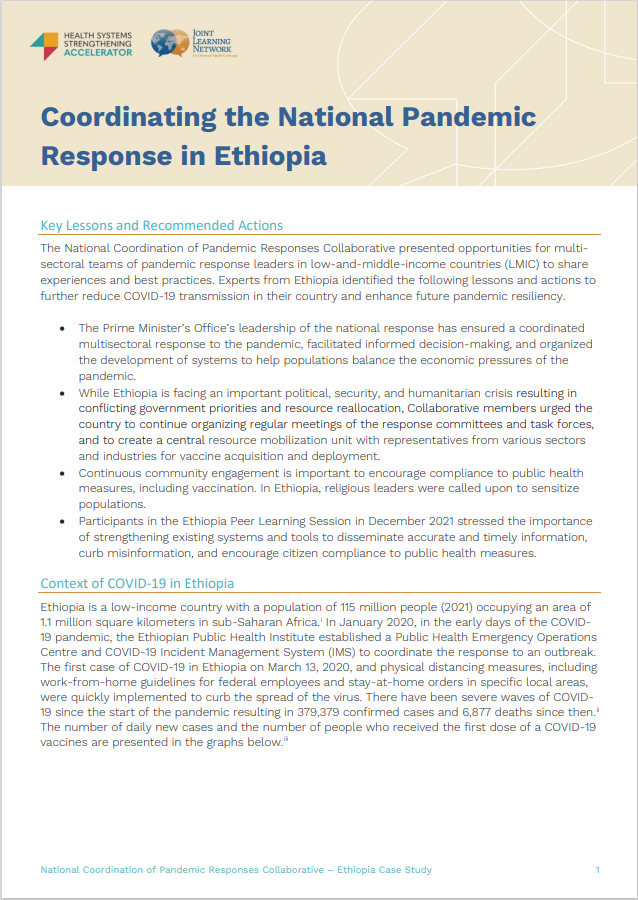
Coordinating the National Pandemic Response in Ethiopia
Experts from Ethiopia identified the following lessons and actions to further reduce COVID-19 transmission in their country and enhance future pandemic resiliency.
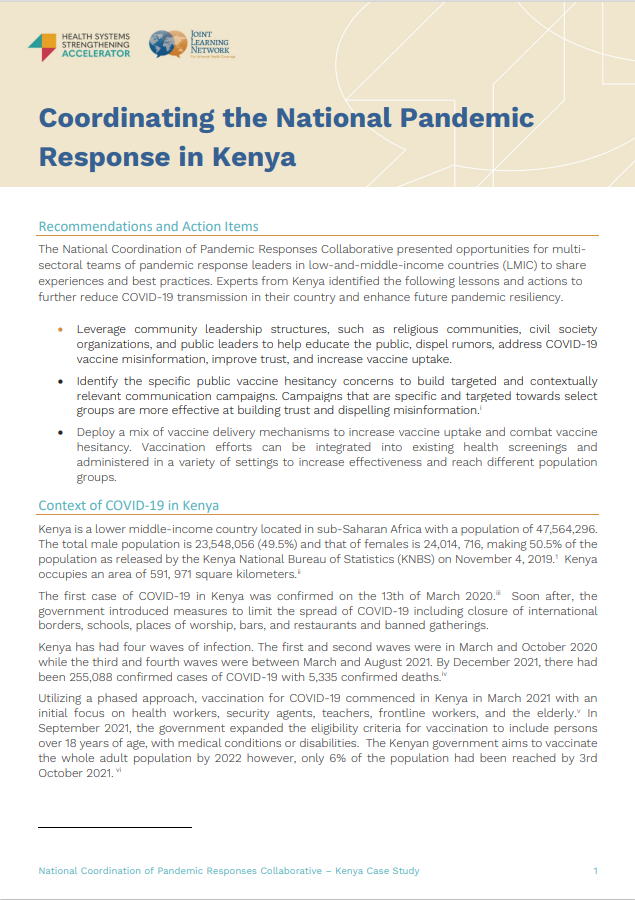
Coordinating the National Pandemic Response in Kenya
Experts from Kenya identified the following lessons and actions to further reduce COVID-19 transmission in their country and enhance future pandemic resiliency
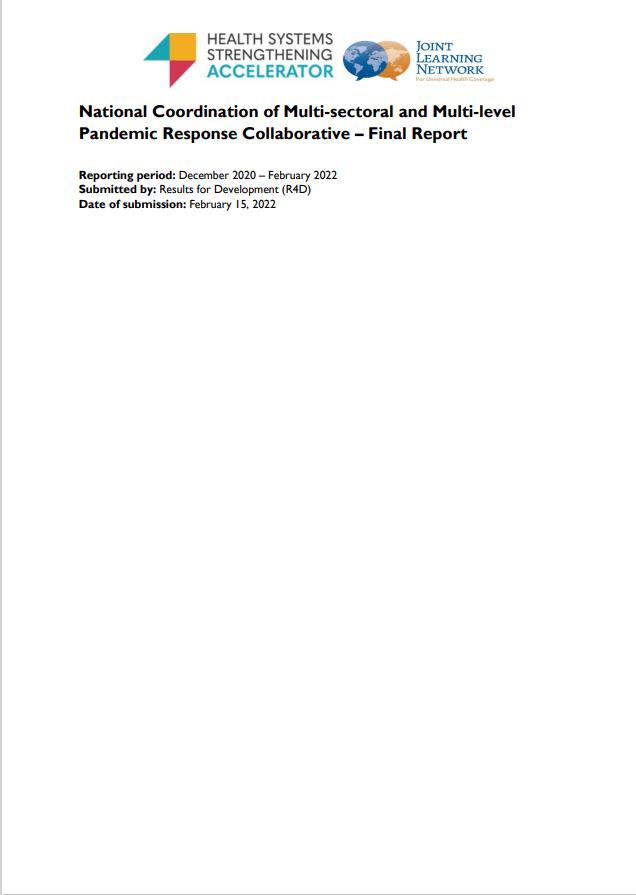
National Coordination of Multi-sectoral and Multi-level Pandemic Response Collaborative: Final Report
This report summarizes the findings from the collaborative, which sought to strengthen the leadership capacities and functions needed to ensure strong cross-sectoral and multi-level coordination for COVID-19 and support counties in building more resilient and responsive systems in the future to achieve universal health coverage (UHC).
